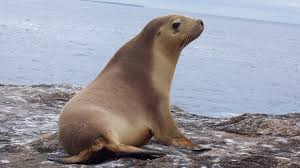By: Yi Chen
Researchers attached cameras to sea lions to help them explore the ocean. They dived into many unexpected places, such as craggy rocks and meadows of seaweeds that scientists had never seen before. It even includes recordings of a mother sea lion teaching her young seal to hunt. The sea lions, called Daphne, Phoebe, Iris, and Pasithea can easily record sea lion footage. The findings of their camera work were published in the journal Frontiers in Marine Science.
Mr. Angelakis, a student at the University of Adelaide, and his colleagues hope their exploration of? will help scientists understand how sea lions use these habitats, and how humans can manage these ecosystems to make the habitats visited by endangered sea lions aren’t degraded.
Scientists usually map the ocean floor using remotely operated cameras and vehicles towed by underwater vessels. However, using these challenging tools may be very expensive. Therefore, Mr. Angelakis and his colleagues decided to use sea lions to map the aquatic ecosystems around Kangaroo Island and Olive Island. They attached cameras to the sea lions, who routinely dive three hundred feet beneath the water’s surface when hunting.
Approved by marine conservation authorities, Mr. Angelakis and his team approached the sea lions and administered a light sedative. While the sea lions were groggy, the scientists glued wet suit material slightly larger than a credit card to their head and back. They then put on small cameras and devices to track their speed and location.
When the animals woke up, they went into the water. After some days, the eared seals returned to their pups on the shore, and the researchers removed the devices. After they retrieved the cameras, they looked at the footage on a laptop screen, where they saw the sea lions hunting in many different places. Additionally, the videos gave researchers a perspective on the ocean floor. The researchers trained a machine with videos, GPS data, and environmental information.











